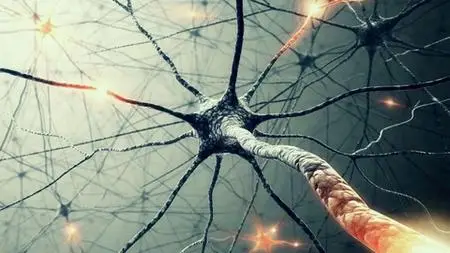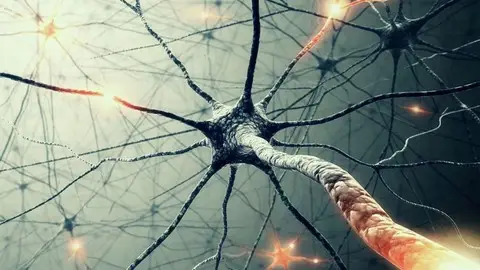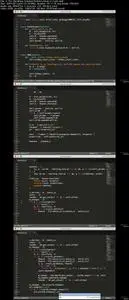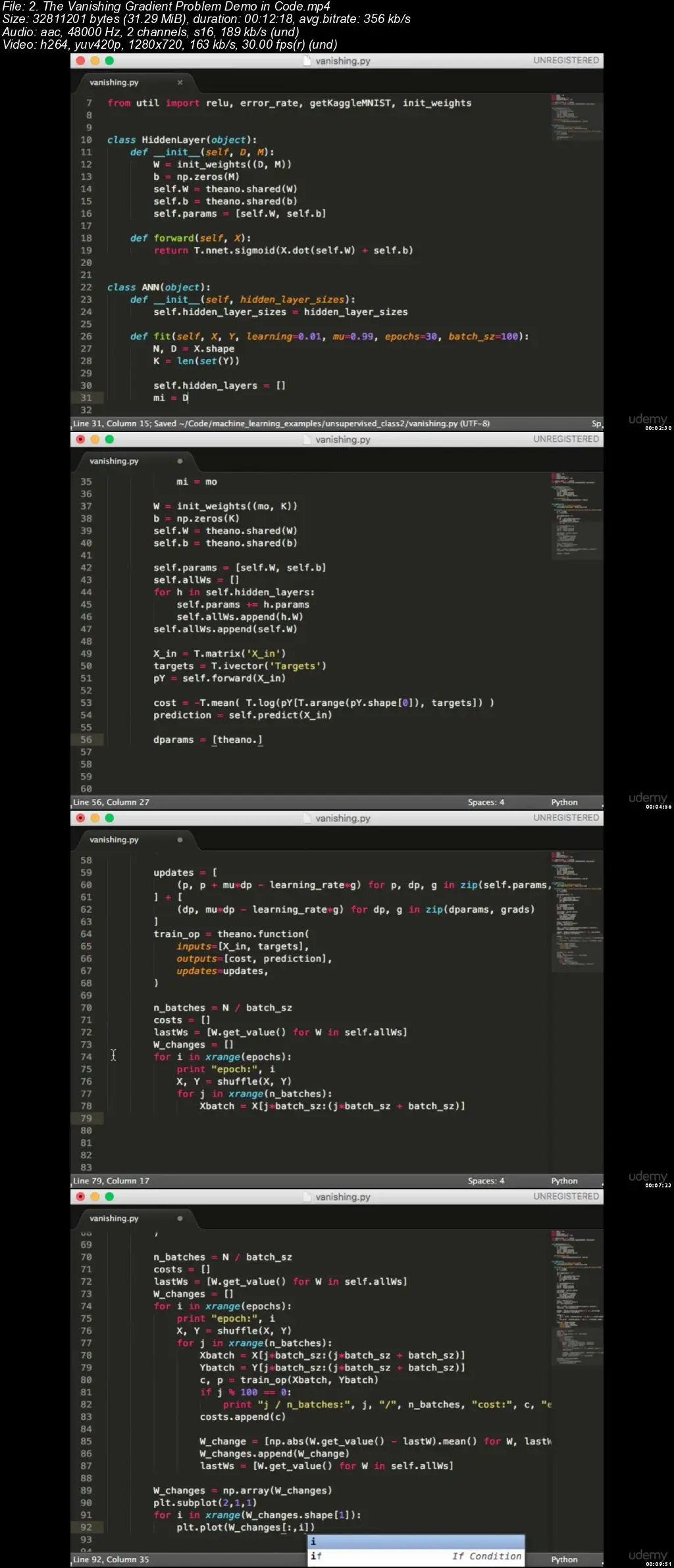Unsupervised Deep Learning in Python
.MP4 | Video: 1280x720, 30 fps(r) | Audio: AAC, 48000 Hz, 2ch | 2.69 GB
Duration: 10.5 hours | Genre: eLearning Video | Language: English
.MP4 | Video: 1280x720, 30 fps(r) | Audio: AAC, 48000 Hz, 2ch | 2.69 GB
Duration: 10.5 hours | Genre: eLearning Video | Language: English
Theano / Tensorflow: Autoencoders, Restricted Boltzmann Machines, Deep Neural Networks, t-SNE and PCA.
What you'll learn
Understand the theory behind principal components analysis (PCA)
Know why PCA is useful for dimensionality reduction, visualization, de-correlation, and denoising
Derive the PCA algorithm by hand
Write the code for PCA
Understand the theory behind t-SNE
Use t-SNE in code
Understand the limitations of PCA and t-SNE
Understand the theory behind autoencoders
Write an autoencoder in Theano and Tensorflow
Understand how stacked autoencoders are used in deep learning
Write a stacked denoising autoencoder in Theano and Tensorflow
Understand the theory behind restricted Boltzmann machines (RBMs)
Understand why RBMs are hard to train
Understand the contrastive divergence algorithm to train RBMs
Write your own RBM and deep belief network (DBN) in Theano and Tensorflow
Visualize and interpret the features learned by autoencoders and RBMs
Requirements
Knowledge of calculus and linear algebra
Python coding skills
Some experience with Numpy, Theano, and Tensorflow
Know how gradient descent is used to train machine learning models
Install Python, Numpy, and Theano
Some probability and statistics knowledge
Code a feedforward neural network in Theano or Tensorflow
Description
This course is the next logical step in my deep learning, data science, and machine learning series. I’ve done a lot of courses about deep learning, and I just released a course about unsupervised learning, where I talked about clustering and density estimation. So what do you get when you put these 2 together? Unsupervised deep learning!
In these course we’ll start with some very basic stuff - principal components analysis (PCA), and a popular nonlinear dimensionality reduction technique known as t-SNE (t-distributed stochastic neighbor embedding).
Next, we’ll look at a special type of unsupervised neural network called the autoencoder. After describing how an autoencoder works, I’ll show you how you can link a bunch of them together to form a deep stack of autoencoders, that leads to better performance of a supervised deep neural network. Autoencoders are like a non-linear form of PCA.
Last, we’ll look at restricted Boltzmann machines (RBMs). These are yet another popular unsupervised neural network, that you can use in the same way as autoencoders to pretrain your supervised deep neural network. I’ll show you an interesting way of training restricted Boltzmann machines, known as Gibbs sampling, a special case of Markov Chain Monte Carlo, and I’ll demonstrate how even though this method is only a rough approximation, it still ends up reducing other cost functions, such as the one used for autoencoders. This method is also known as Contrastive Divergence or CD-k. As in physical systems, we define a concept called free energy and attempt to minimize this quantity.
Finally, we’ll bring all these concepts together and I’ll show you visually what happens when you use PCA and t-SNE on the features that the autoencoders and RBMs have learned, and we’ll see that even without labels the results suggest that a pattern has been found.
All the materials used in this course are FREE. Since this course is the 4th in the deep learning series, I will assume you already know calculus, linear algebra, and Python coding. You'll want to install Numpy, Theano, and Tensorflow for this course. These are essential items in your data analytics toolbox.
If you are interested in deep learning and you want to learn about modern deep learning developments beyond just plain backpropagation, including using unsupervised neural networks to interpret what features can be automatically and hierarchically learned in a deep learning system, this course is for you.
This course focuses on "how to build and understand", not just "how to use". Anyone can learn to use an API in 15 minutes after reading some documentation. It's not about "remembering facts", it's about "seeing for yourself" via experimentation. It will teach you how to visualize what's happening in the model internally. If you want more than just a superficial look at machine learning models, this course is for you.
HARD PREREQUISITES / KNOWLEDGE YOU ARE ASSUMED TO HAVE:
calculus
linear algebra
probability
Python coding: if/else, loops, lists, dicts, sets
Numpy coding: matrix and vector operations, loading a CSV file
can write a feedforward neural network in Theano or Tensorflow
TIPS (for getting through the course):
Watch it at 2x.
Take handwritten notes. This will drastically increase your ability to retain the information.
Write down the equations. If you don't, I guarantee it will just look like gibberish.
Ask lots of questions on the discussion board. The more the better!
Realize that most exercises will take you days or weeks to complete.
Write code yourself, don't just sit there and look at my code.
WHAT ORDER SHOULD I TAKE YOUR COURSES IN?:
Check out the lecture "What order should I take your courses in?" (available in the Appendix of any of my courses, including the free Numpy course)
Who this course is for:
Students and professionals looking to enhance their deep learning repertoire
Students and professionals who want to improve the training capabilities of deep neural networks
Students and professionals who want to learn about the more modern developments in deep learning





